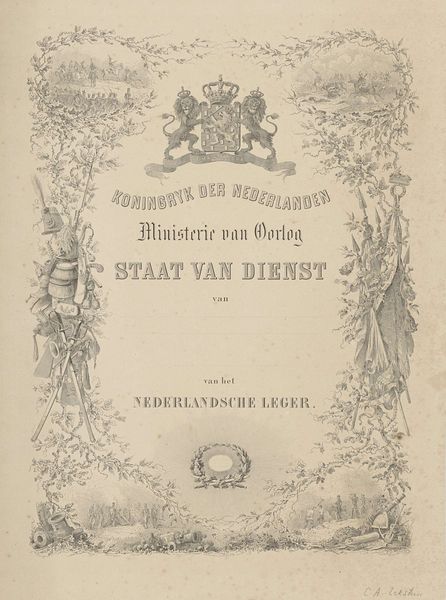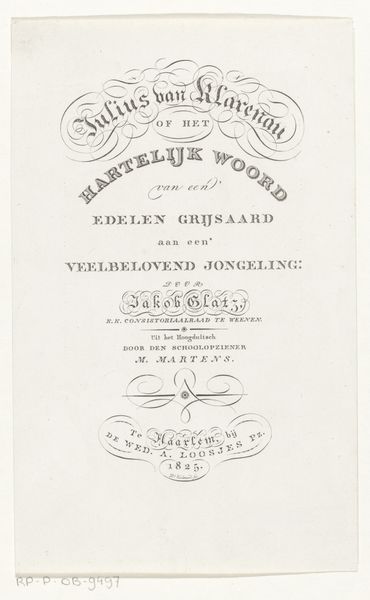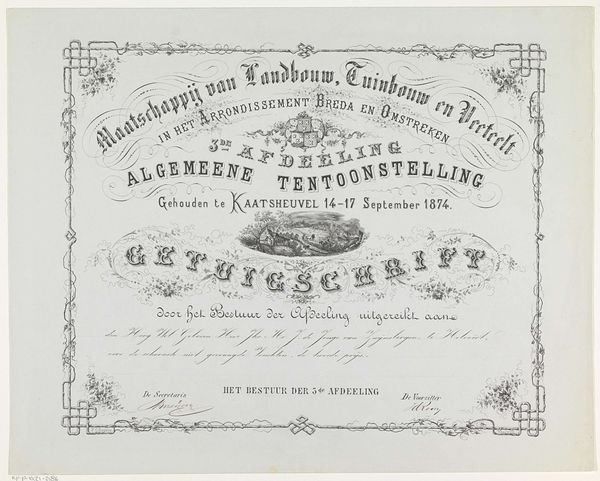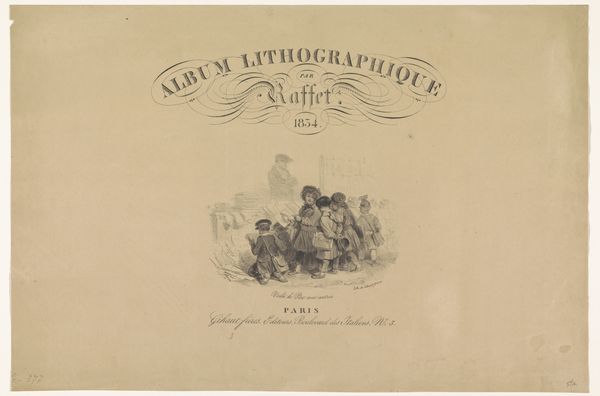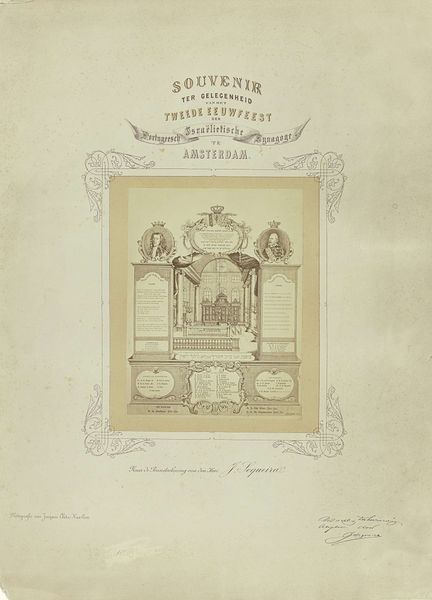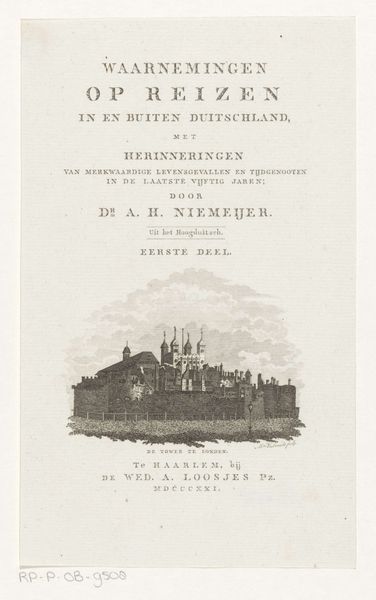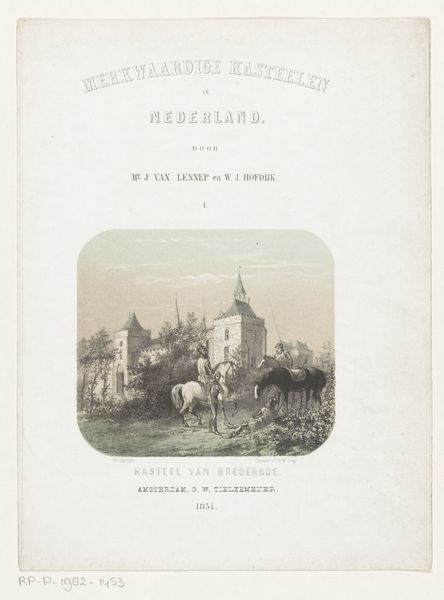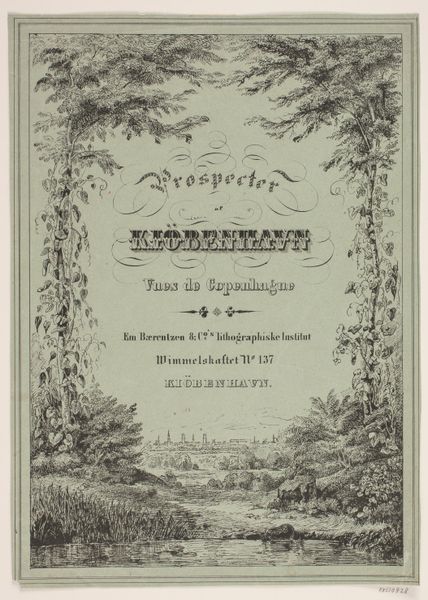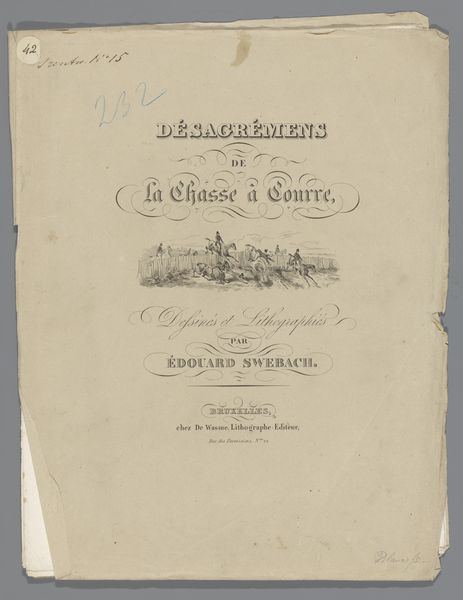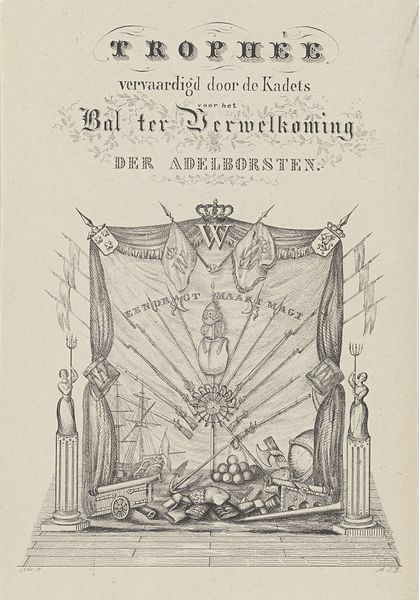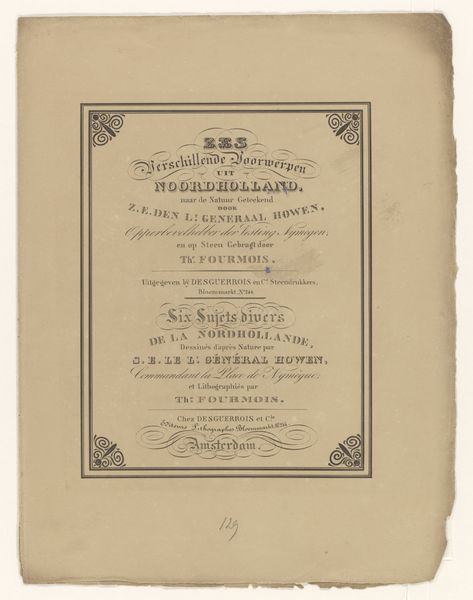
graphic-art, print, engraving
#
portrait
#
graphic-art
# print
#
engraving
Dimensions: height 352 mm, width 266 mm
Copyright: Rijks Museum: Open Domain
Huib van Hove made this lithograph titled 'Album van het Gekostumeerd Bal' in 1841. It commemorates a costume ball in The Hague, Netherlands, and it offers a glimpse into the social rituals of the Dutch elite during that time. The image presents an array of musical instruments and costume elements, visually suggesting the lively atmosphere of the ball. The choice of lithography as a medium is notable, as it allowed for relatively inexpensive reproduction, indicative of a growing market for printed ephemera. In the 19th-century Netherlands, costume balls were significant social events for the upper classes, providing opportunities for networking, display of wealth, and reinforcement of social hierarchies. This lithograph, therefore, functions as a record and a symbol of such gatherings. Historians researching this piece might consult archival records of social events in The Hague, fashion plates of the period, and genealogical information about the attendees to fully understand its historical context. Ultimately, the meaning of this image is inseparable from its social and institutional setting.
Comments
No comments
Be the first to comment and join the conversation on the ultimate creative platform.
